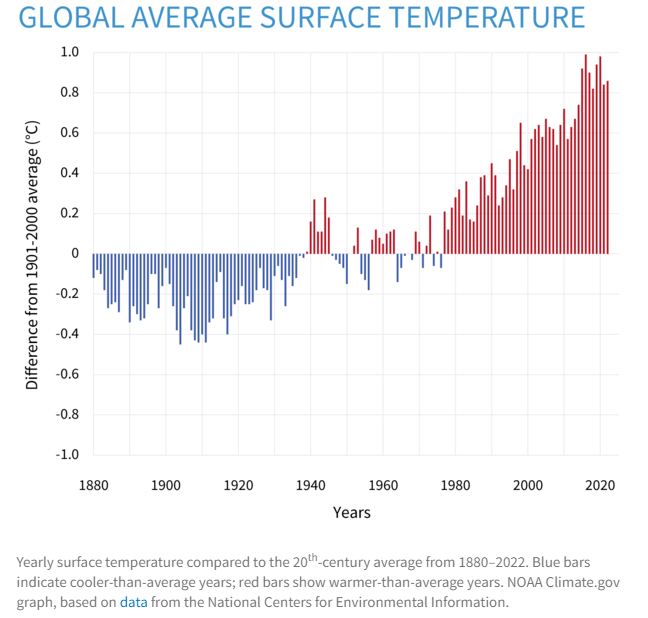Given the consistent data on global temperature rises from the Climate.gov report, it’s evident that regions around the world are becoming more susceptible to the impacts of climate change. Such impacts, like the catastrophic fires in Hawaii, are becoming more intense and frequent. Here’s how emergency management could have better responded given the knowledge from this report:
Anticipate Droughts and Fires: The Climate.gov report clearly highlights a trend of increased temperature extremes and reduced rainfall. Regions such as Hawaii that have experienced a significant decline in rainfall should be identified as high-risk areas for fires.
Update Infrastructure: Knowing the vulnerabilities caused by climate change, emergency teams should work with urban planners to ensure infrastructure (like water supply systems) are designed to withstand and help combat such events.
Regular Monitoring: The consistent rise in temperatures, particularly the doubling of the warming rate post-1981, calls for enhanced monitoring of forests and dry areas that are more susceptible to catching fire.
Advance Preparedness: With 10 of the warmest years occurring post-2010 and 2022 being the sixth-warmest, the trends indicate a clear warning. Evacuation plans, early warning systems, and community drills should be regularly updated and practiced.
Habitat Protection: The report mentions changing habitats for plants and animals, implying shifts in ecosystems. Emergency managers should be knowledgeable about these changes to understand, for example, where dry grasses might proliferate, increasing fire risks.
Public Awareness: Harnessing the data, emergency agencies should run educational campaigns, making locals aware of the increased fire risks, teaching them preventive measures and ensuring they know evacuation protocols.
Collaboration with Climate Scientists: Establishing regular communication with climate scientists would help emergency managers stay updated on recent climate trends and potential risks specific to their regions.
Resource Allocation: Given the data, resources like fire-fighting equipment, personnel, and funding should be prioritized and allocated to the regions that have shown rapid warming, such as land areas that warm faster than oceans.
Consider Global Patterns: With the Arctic warming faster than most other regions and some parts of the Southern Hemisphere cooling, understanding these global shifts can offer insights. For instance, faster warming in the Arctic might impact global weather patterns, affecting rainfall and temperatures elsewhere.
Addressing Underlying Causes: While this might not be directly under the purview of emergency management, advocating for policies that address the root causes of climate change could help in long-term mitigation.
The Climate.gov report serves as a stern reminder that our planet is undergoing significant and rapid changes. It is no longer sufficient for emergency management teams to react to disasters; they must use available data to anticipate, prepare, and mitigate the impacts of such disasters.

